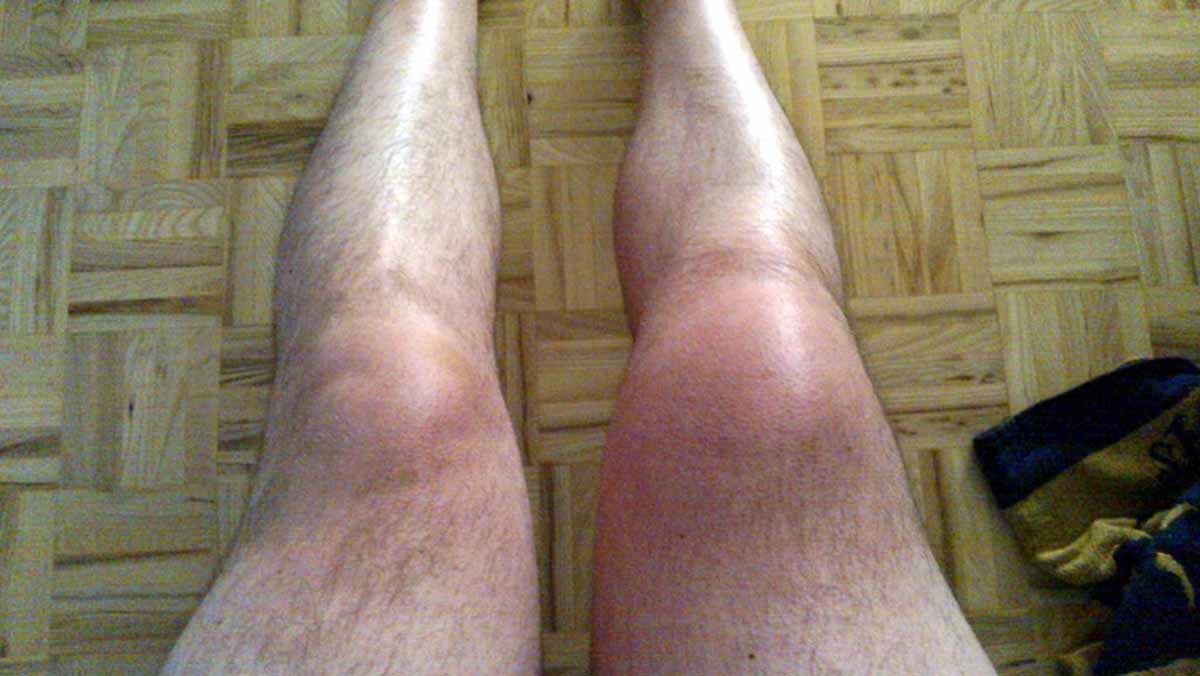Classified as an autoimmune condition, reactive arthritis develops in response to an infection in another part of the body, almost exclusively either in the genitals or bowel. The most common triggering infection is Chlamydia, although Shingles and Salmonella are also known to provoke the condition as well. Complaints include joint pain and swelling, particularly in the knees, ankles and feet, however the eyes, skin and urethra may also be inflamed.
Reactive Arthritis: Mechanism Of Disease
Reactive arthritis presents itself in the patient about one to three weeks after the initial infection. Exactly how and why the patient’s immune system reacts to the infecting bacteria in this way is unknown. After extensive research, scientists have concluded that the condition is caused either by bacterial antigens that, for some reason, have been deposited in the joints, or by an autoimmune response involving cross-reactivity of bacterial antigens with tissues in the joints.

The human body responds to an infection by generating antibodies and other chemicals to attack and eradicate the infecting germ. Various debris and other chemicals can be the by-product of this attacking process, and it is this debris that may become lodged and stuck in the joints, triggering inflammation and ultimately, reactive arthritis.
Risk Factors And Genetic Predisposition
The clinical pattern of reactive arthritis consists of fewer than five joints presenting with inflammation. The condition may progress logically whereby more joints become inflamed in addition to the initially infected site, or it may appear to improve but new joints then subsequently become inflamed. Individuals aged between 20 and 40 years of age are at most risk, and in general, men are affected more than women. This is particularly true in the case of instances linked to sexually transmitted diseases. In addition, a genetic link has also been found. White people are around 50 times more likely to develop reactive arthritis owing to the high frequency of the HLA-B27 gene in the white population. In the UK, 1 in 14 people have this gene, which seems to make them much more likely to develop reactive arthritis in response to a triggering infection.
Antibiotics And Anti-Inflammatory Drugs To Relieve Symptoms
So what can be done about it? At present, there is no known cure for reactive arthritis. Instead, treatment is centered around relieving the symptoms based on their severity. In the majority of cases, symptomatic treatment and supportive care are all that is needed to see the patient through to complete recovery. These include oral antibiotics to combat the initial infection and non-steroidal anti-inflammatory drugs, known as NSAIDs, to treat inflammation and pain in the joints. Long term use of NSAIDs is not usually recommended though, as they can lead to stomach ulcers and other digestive issues.
Chronic Reactive Arthritis And Lifestyle Modification Approaches
In as many as 30 percent of cases, the patient can develop chronic symptoms and this poses many challenges therapeutically for doctors and specialist physicians. In these cases, the condition is usually treated with disease-modifying anti-thematic drugs (DMARDs), which are administered in the form of an injection and help to remove fluid build-up in the joints. If the joints are particularly inflamed, steroid injections are sometimes also recommended in the joints and muscles, and these work by blocking the effects of the chemicals in the body that triggered the inflammation.
Rest, Physical Exercise And Diet To 'Treat' Reactive Arthritis
Overall, the best medicine for inflamed joints is rest and sleep. This is often easier said than done in today’s busy and hectic lifestyle, but it is important not to put undue strain on the inflamed joints. In many cases of reactive arthritis, a series of exercises are usually prescribed by a physiotherapist in order to keep the joints moving and maintain the muscle strength.

There is also a school of thought that diet has a role to play in treating the reactive arthritis. Fish oils and rose hip extracts have been reported by some to aid in reducing the inflammatory pain in the joints, therefore cutting out the need for as many anti-inflammatory drugs. However this has not been scientifically proven, although a well-balanced diet and an active lifestyle goes a long way in promoting health and well-being in general.
As long as reactive arthritis is caught early on and treated effectively, the outlook is generally very good. In some cases, the symptoms last just a few weeks, but for the majority treatment is needed for at least 3 months but disappear after 6 months with no lasting effects. Most people experience a complete recovery and are left with just a few small aches and pains, especially if the initial infection that caused it is identified and eradicated quickly.
Recurrent Disease
But is it likely to return again? Can anything be done by a patient do to prevent a relapse?
READ Fibromyalgia and Arthritis - What is the Difference?
Unfortunately, reactive arthritis can sometimes come back. It has been known for symptoms to return in a patient who has previously been diagnosed with reactive arthritis after several months or even years. The reasons for this are largely unknown; sometimes it is simply a reaction to a new infection, other times the symptoms seem to flare up again for no particularly obvious reason. At present, patients who have experienced an episode of reactive arthritis are advised to take particular care against food poisoning and sexually transmitted diseases in order to limit the chances of a relapse. This, combined with a healthy diet and an active stress-free lifestyle, will go a long way in preventing any re-occurrence of the disease.
- Keat A et al, 1987, Chlamydia trachomatis and reactive arthritis: the missing link. The Lancet, 329(8524), 72-74
- Toivanen P and Toivanen A, 1999, Two Forms Of Reactive Arthritis? Annals of the Rheumatic Diseases, 58, 737-741
- Hermann E et al, 1993, HLA-B27-restricted CD8 T cells derived from synovial fluids of patients with reactive arthritis and ankylosing spondylitis. The Lancet, 342(8872), 646-650
- Carter JD et al, 2010, Combination antibiotics as a treatment for chronic Chlamydia-induced reactive arthritis: a double-blind, placebo-controlled, prospective trial. Arthritis and Rheumatism, 62(5), 1298-1307
- Tanaka T et al, 2009, Successful treatment of reactive arthritis with a humanized anti-interleukin-6 receptor antibody, tocilizumab. Arthritis Care & Research, 61(12), 1762-1764.
- Photo courtesy of ::Tanty:: via Flickr: www.flickr.com/photos/tanty0/16595983943
- Photo courtesy of Joe Shlabotnik via Flickr: www.flickr.com/photos/joeshlabotnik/419914250


Your thoughts on this